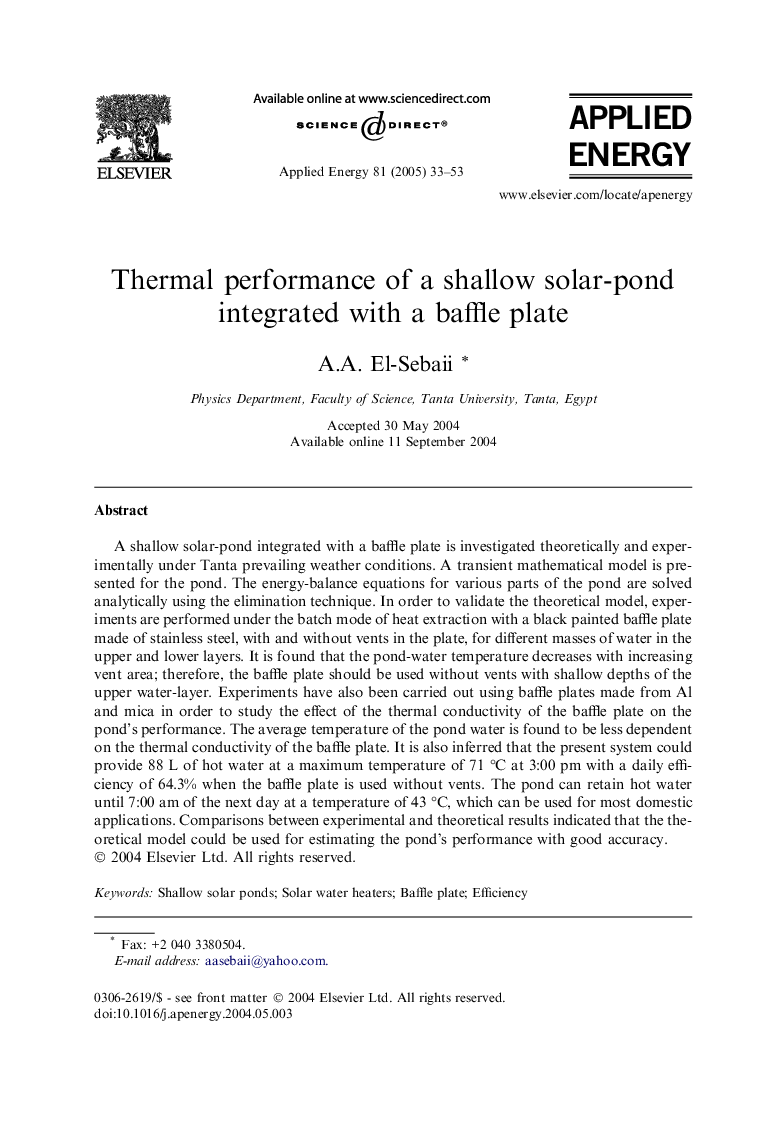| Article ID | Journal | Published Year | Pages | File Type |
|---|---|---|---|---|
| 10282086 | Applied Energy | 2005 | 21 Pages |
Abstract
A shallow solar-pond integrated with a baffle plate is investigated theoretically and experimentally under Tanta prevailing weather conditions. A transient mathematical model is presented for the pond. The energy-balance equations for various parts of the pond are solved analytically using the elimination technique. In order to validate the theoretical model, experiments are performed under the batch mode of heat extraction with a black painted baffle plate made of stainless steel, with and without vents in the plate, for different masses of water in the upper and lower layers. It is found that the pond-water temperature decreases with increasing vent area; therefore, the baffle plate should be used without vents with shallow depths of the upper water-layer. Experiments have also been carried out using baffle plates made from Al and mica in order to study the effect of the thermal conductivity of the baffle plate on the pond's performance. The average temperature of the pond water is found to be less dependent on the thermal conductivity of the baffle plate. It is also inferred that the present system could provide 88 L of hot water at a maximum temperature of 71 °C at 3:00 pm with a daily efficiency of 64.3% when the baffle plate is used without vents. The pond can retain hot water until 7:00 am of the next day at a temperature of 43 °C, which can be used for most domestic applications. Comparisons between experimental and theoretical results indicated that the theoretical model could be used for estimating the pond's performance with good accuracy.
Related Topics
Physical Sciences and Engineering
Energy
Energy Engineering and Power Technology
Authors
A.A. El-Sebaii,
